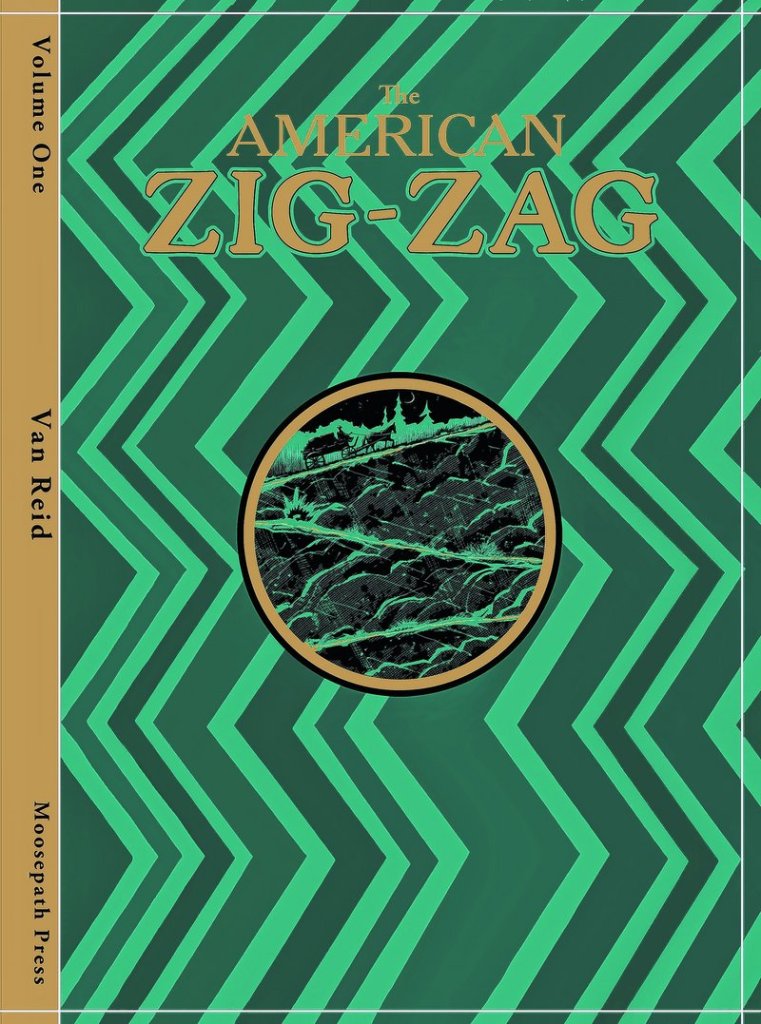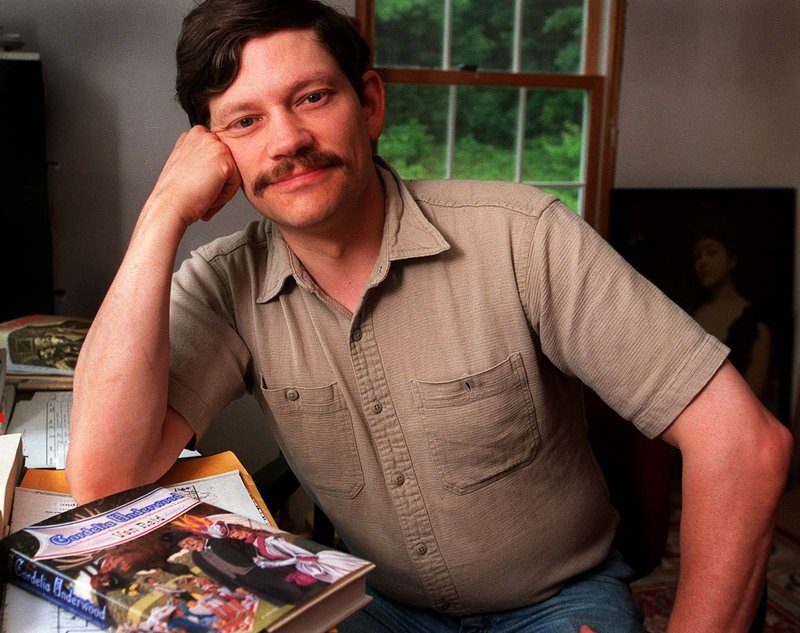After a short hiatus, Edgecomb writer Van Reid returns to the Maine literary scene with “The American Zig-Zag: Volume One,” an anthology-style collection of short stories.
Reid is best known as creator of the Moosepath League series about an adventurous group of friends who form a gentlemen’s club in late 19th-century Portland. He had great success with the series, which was picked up by a major publisher and developed a loyal national following. His first book, “Cordelia Underwood, or the Marvelous Beginnings of the Moosepath League,” was named a notable book of the year by The New York Times.
With time, Reid proved too witty, or perhaps a bit too quirky, for corporate publishing. His books flummoxed his publisher, which was unsure how to market him or his books. He eventually dropped out and has re-emerged with his own publishing house, Moosepath Press. “The American Zig-Zag: Volume One” is his first book.
We recently interviewed Reid by phone about his new book and his path to self-publishing.
Q: So the Moosepath League lives on? For those not up to speed, give us the quick history.
A: The stories started as a serial in a local weekly newspaper. The novels were all about a gentlemen’s club in the old sense of the word in late 19th-century Portland. The central characters are kind of comic figures in a series of stories that includes real straight-ahead adventure, mystery, romance and dashes of the supernatural. They are a real stew of things, with lots of characters. I would say there is a Victorian flavor to the writing, or what I call a modern gloss on Victorian writing.
There are five books in the series, and the first started being serialized in 1993, and it took two years. And then I got a call from an agent in New York who had seen episodes in the local paper. Within two months, I had a three-book contract with Viking Penquin, and the first book was put on The New York Times notable-books-of-the-year list.
The books have gotten wonderful reviews around the country. I keep hearing from readers looking for more and asking about the Moosepath League. The books right now are out of print, but I just got publishing rights reverted back to me. So I am hoping to reprint them, and I am hoping to write more.
Q: Let’s talk about “The American Zig-Zag.” You present these stories as an anthology. Why?
A: Everybody has to get out of the box once in a while. I had written long, involved, intricate novels. All the novels have three major plots that weave in and out. I decided to get back and try to write some short fiction and also try to write about things outside of Maine, to jump-start me a little bit.
Q: Where does the title come from?
A: All the stories take place in different locations. The idea was to sort of be all over the continent, the Americas, zig-zagging, so to speak. There’s an old-fashioned Western in Manitoba, a story that takes place off the coast of Brazil, told by a character in Portland, Maine.
Q: Are there connections between this new book and the Moosepath League books?
A: Only in tone and sort of theme. One thing about my books that my publisher had trouble with was explaining them to people. They are not easy to explain in a couple of sentences. They kept talking about, “Oh, they are gentle.” “They are optimistic.” Yeah, to a degree they are. But I would compare them to the movie “It’s a Wonderful Life.” It’s an uplifting ending, but people don’t realize how dark and scary it is up to the end.
But to answer your question, “The American Zig-Zag” is written in such a style that (the characters of the Moosepath League) might have picked it up at their favorite booksellers and talked about it on Thursday night at Shipwood’s Restaurant.
Q: The book is rich in illustrations. Where did they come from?
A: I’ve been fortunate over the last few years to connect with a lot of people through the Internet. There is kind of a sub-group on the Internet trying to save a lot of printed ephemera — old newspapers, old magazines that are starting to disintegrate. In that kind of an endeavor, you run into artists. Five of the artists are people I know only on the Internet. The cover, which I think is stunning, is from Jeff Suntala of Ohio.
Q: What sort of moral or philosophical boundaries did you have to negotiate in going the self-published route?
A: Ten years ago, I would never have dreamed of doing it. There was a time when self-publishing meant you could not get published by anybody else. That was the feeling about it. It was almost like giving up. But times have changed. The publishing world is in incredible flux. The publishing business is following the film and music industries in looking for a big blockbuster. They are not interested in the slow burn, which is what I was. I was gathering readers all the time, but it wasn’t fast enough.
Self-publishing is a way to get around all of that. I have a track record. I have been published. I have gotten reviews. It’s a feather in my cap to say that one of my books was a New York Times notable book of the year. I am still the same person, and hopefully even a better writer. So why not? This has been fun. It’s a different experience, and it’s been a lot of fun.
Q: What are you doing to promote the book?
A: I have a lot of people who have communicated with me over the years over the Internet. I am promoting it that way. I am getting the word out slowly. I’m hearing from stores, but nothing is set up yet. I will do a reading at the Skidompha Library (in Damariscotta), but that hasn’t been set up yet.
Q: What is next?
A: This is volume one. I would love to hear from readers what they like, if some or one of these characters should show up again. I also have the next Moosepath League volume probably about 75 or 80 percent written.
Q: Tell me about your life.
A: I live in Edgecomb, and a large part of my growing up was in Sheepscot Village. My family comes from Maine way back, on three sides. People ask me what I write, and I write what I know. My characters, if they seem real — and people seem to think they are — if they are really strong and good and kind and gentle, it’s because I am tapping into what I have experienced in my life. My wife and I always say, “Aren’t there a lot of good people in the world?”
Staff Writer Bob Keyes can be contacted at 791-6457 or at: bkeyes@pressherald.com
Follow him at Twitter at: twitter.com/pphbkeyes
For information, visit moosepath.com or e-mail the author at: vanreid@tidewater.net
Send questions/comments to the editors.




